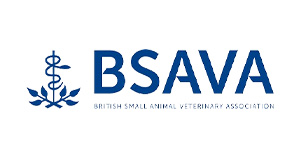IBR review
Published on: Oct 27, 2023
How to know your disease status, ensuring good disease control
As we head through autumn and towards winter housing, we are moving into the peak risk period for IBR (Infectious Bovine Rhinotracheitis). This is a viral disease that can spread rapidly between animals, particularly when they are coming into close contact in winter housing. It can cause a range of signs in cattle, from milk drop, poor growth rates and reduced fertility through to severe respiratory signs that can lead to death in the most severe cases.
Once infected, animals can carry the infection in their system even once recovered. These latently infected animals can shed the disease, continuing to infect other animals around them, as well as becoming ill themselves if stressed, for example after calving, housing, or transport. While it is relatively easy to spot the more severe respiratory signs, mild symptoms can be easy to overlook but even these can cause significant financial impact through reduced milk sales, delayed pregnancies/abortions, and reduced growth rates.
We can test for IBR in several ways; through bulk milk testing, blood sampling and nasal swabs. In clinical outbreaks swabs are often the quickest way to confirm the diagnosis, but it is important to regularly review you herd status even if you are not seeing obvious clinical signs.
Blood testing of youngstock cohorts and bulk tank testing should be carried out on a regular basis. Bulk tank testing tells us if you have significant levels of IBR infection within your adult herd, while youngstock testing is important to ensure that heifers can be vaccinated before they become infected.
Control and prevention of IBR revolves around biosecurity and vaccination is an effective way of boosting your biosecurity. Initial vaccination involves two injections between 1 and 6 months apart, followed by an annual booster. Heifers need to have their initial course before they go to the bull, to ensure that they are protected from fertility effects . Don’t forget that any purchased animals also need to have a full initial course before they join the annual herd booster program.
If purchasing stock always look to buy from a herd with an accredited disease status, and if you regularly sell stock consider becoming accredited yourself. If you want to find out more about how to implement an effective IBR control program on your farm, or to discuss becoming an accredited herd then talk to your routine vet, or give the farm office a call.

Author
Lottie Meire
Learn how to effectively prevent and control infectious bovine rhinotracheitis (IBR) in your dairy herd. Discover the importance of biosecurity, vaccination, and early detection to protect your animals and improve herd productivity.
#IBR #InfectiousBovineRhinotracheitis #CattleDisease #RespiratoryDisease #Biosecurity #Vaccination #HerdHealth #FarmManagement #AnimalHealth











